Every hero starts from somewhere, and in Legend of Mushroom, we begin our new adventure as a humble… mushroom.
But, through persistent idle farming, we’ll eventually grow to become one of the game’s many incredible classes, such as the end-game Martial Sage or Darklord.
Plus, at Level 100, we transform into a proper human being, leaving behind our cute yet vulnerable vegetable form! Getting there isn’t easy, though, but that’s where our comprehensive guide comes into play.
Non-Stop, Idle Gameplay
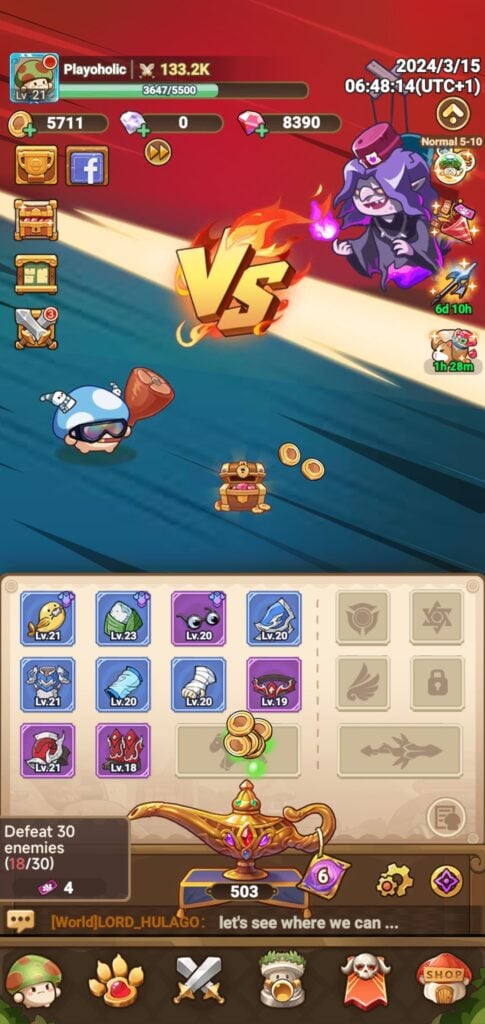
Photo: Joy Nice Games
Quickly, Legend of Mushroom is a no-frills idle mobile game that lets you experience the thrill of growing your character by defeating numerous monster hordes, accumulating EXP and gear/ loot courtesy of your trusty Magic Lamp.
Sadly, there’s no in-game story to be told here, but you’re free to create your own fan fiction of a small mushroom destined to become a powerful human adventurer.
While the game’s concept is highly familiar, certain aspects still need explaining to help you propel yourself to glory, starting with…
Basic Gameplay Mechanics
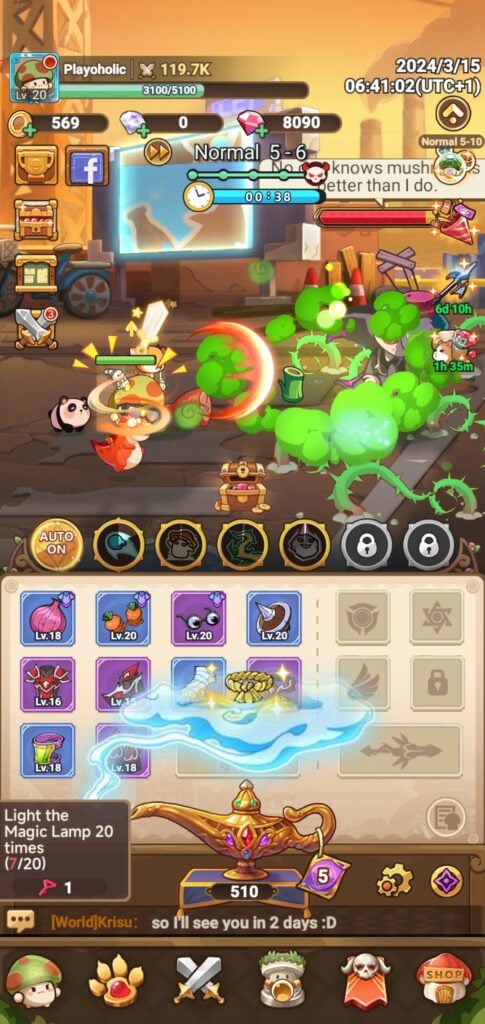
Photo: Joy Nice Games
Legend of Mushroom plays just like any other auto-battle mobile game, such as Cat Hero.
Upon launching the game, our character immediately looks for enemies to defeat, automatically collects loot, and progresses through subsequent in-game Stages after defeating Bosses (e.g. Normal 1-1, Normal 2-3, etc.).
Our interactions during combat are limited except for customizing our avatar with different Skills and equipment, bolstering their offense rating.
However, our main duty (as the player) is to frequently rub the Magic Lamp centered on the screen, generating new equipment for our hero.
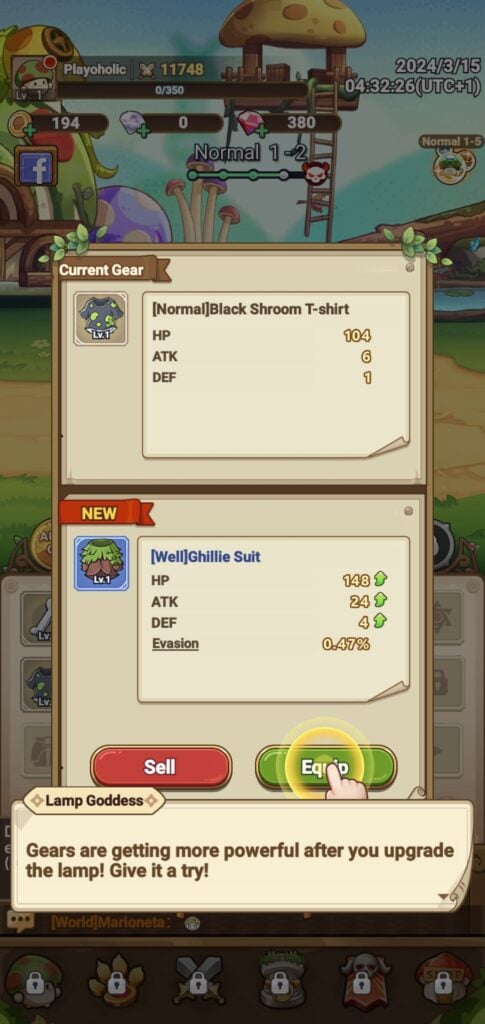
Photo: Joy Nice Games
This is also the only way to level up our character; by selling unwanted gear that we just acquired or replaced with a better one.
Hence, the general gameplay loop functions like this:
- Progress through the in-game Stages by beating Bosses
- Rub the Magic Lamp to get new gear
- Replace weaker equipment with a better one, and then sell the discarded gear for EXP
- If the new gear summoned is already weaker than what you currently have, immediately sell it for the EXP
- Repeat
Currencies
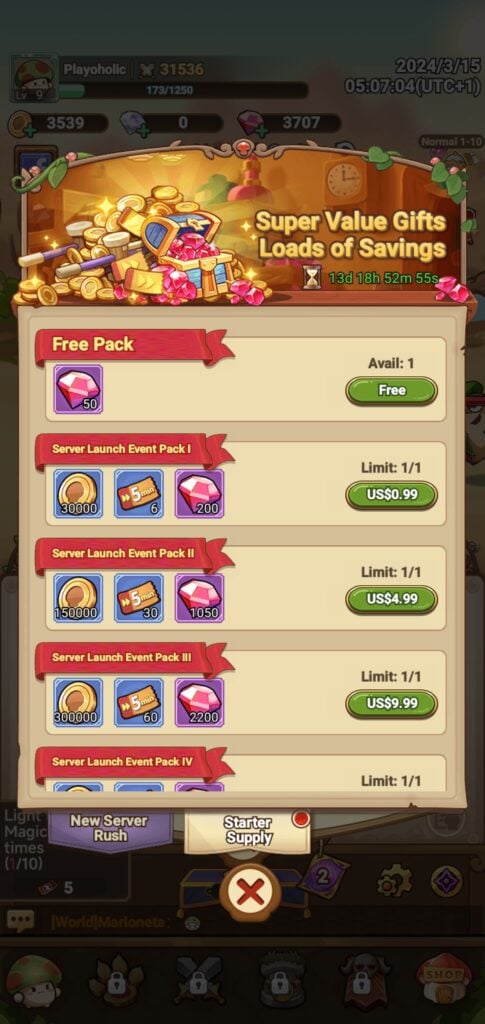
Photo: Joy Nice Games
Before we dive into Legend of Mushroom‘s core elements, we need to know about the game’s three (3) currencies. Each is used for different purposes, as explained below.
Gold
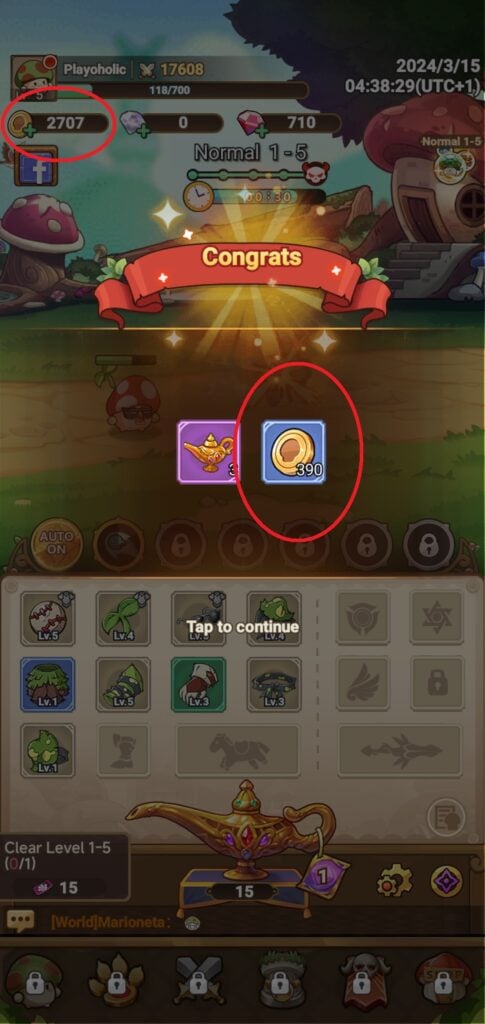
Photo: Joy Nice Games
Represented by the yellow-colored coins, Gold is the resource used for upgrading the Magic Lamp. It’s collected passively as you defeat monster hordes during auto-battles.
Gold isn’t as exclusive as the other two currencies, but it’s still important because a higher-level Magic Lamp gives better chances of getting rarer gear, directly impacting your character’s fighting effectiveness and overall progress.
Diamonds
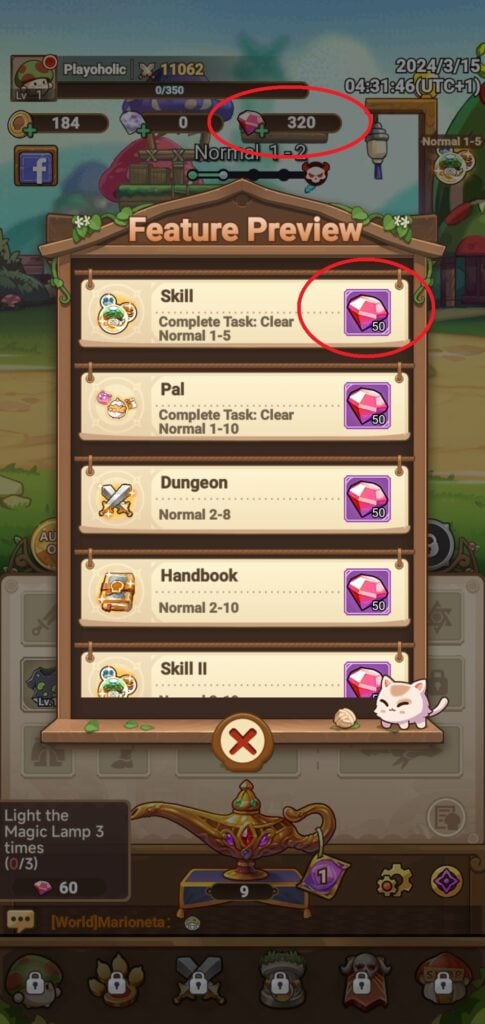
Photo: Joy Nice Games
Diamonds are denoted as the purple/ pink-colored Gems. These are more precious than Gold, acquired by completing in-game tasks and events.
Regarding their use, Diamonds are traded for more Skill draws, Pal pulls, and other related aspects relevant to character progression, once you’ve exhausted the current resources required respectively (Skill Coupons, Pal Coupons, etc.).
Gems
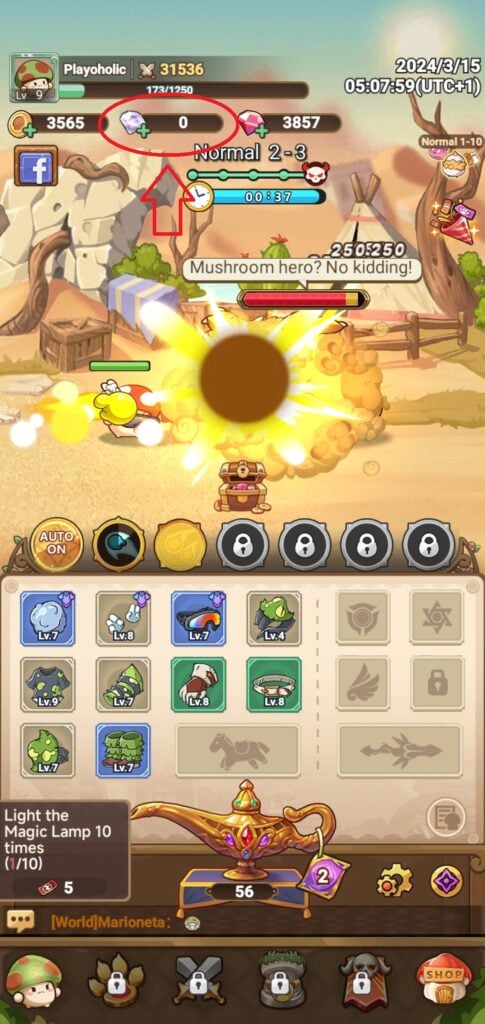
Photo: Joy Nice Games
The game’s most premium currency, Gems can’t be acquired via in-game means. Instead, they can only be bought through real-life purchases.
Gems are the silver/ white-colored versions of Diamonds. These are used for buying amazing skins for your character, such as the Blazing Motorcycle mount.
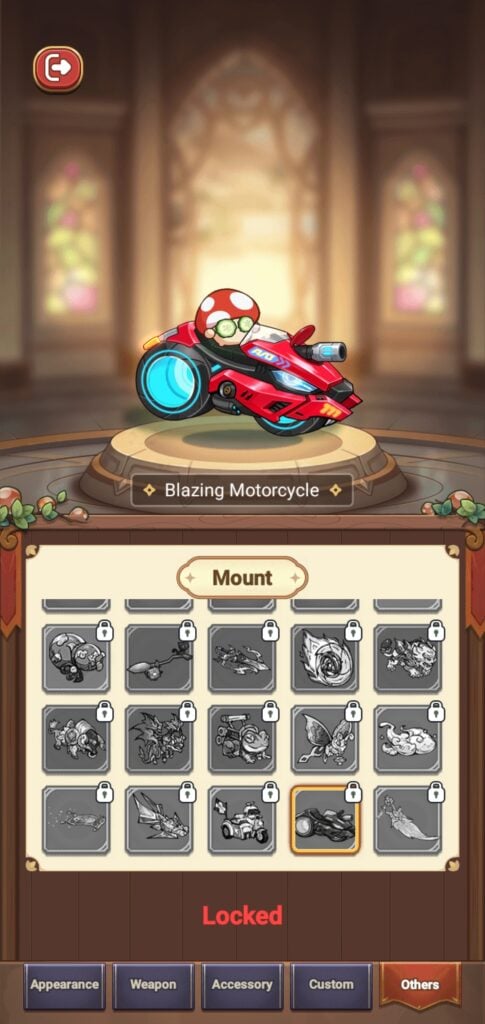
Photo: Joy Nice Games
Character Details
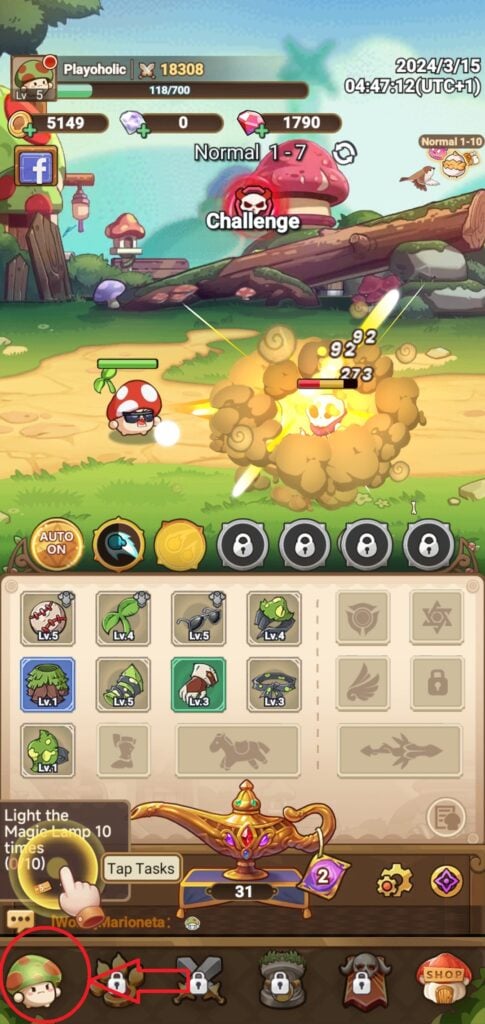
Photo: Joy Nice Games
To explore your character’s class and Skill choices, select the icon on the screen’s bottom-left corner.
Here, you’ll see the relevant info regarding your hero’s current class, rank, etc. Besides that, you can even choose and create Skill presets for your character to use during idle battles.
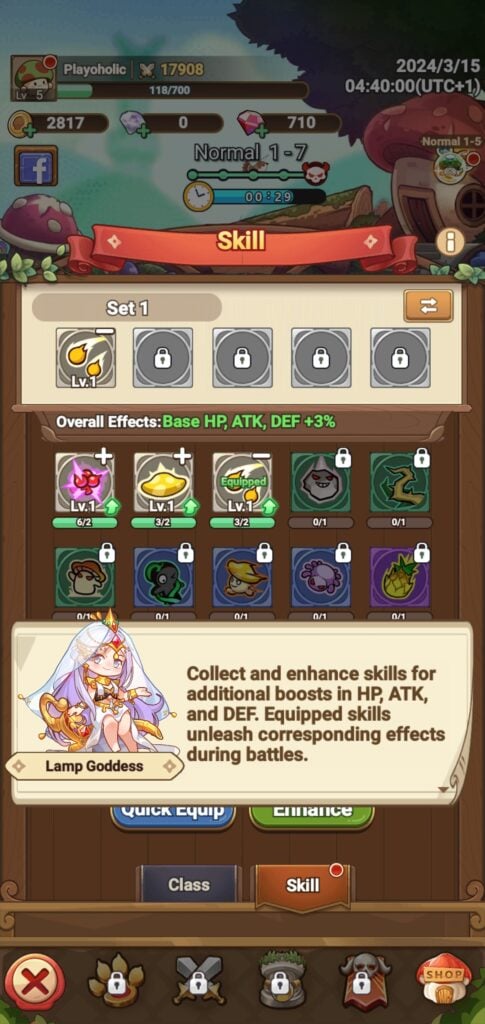
Photo: Joy Nice Games
This section is simple and player-friendly, letting you enhance your character’s vocation and Skills whenever you need to change things around.
Pals
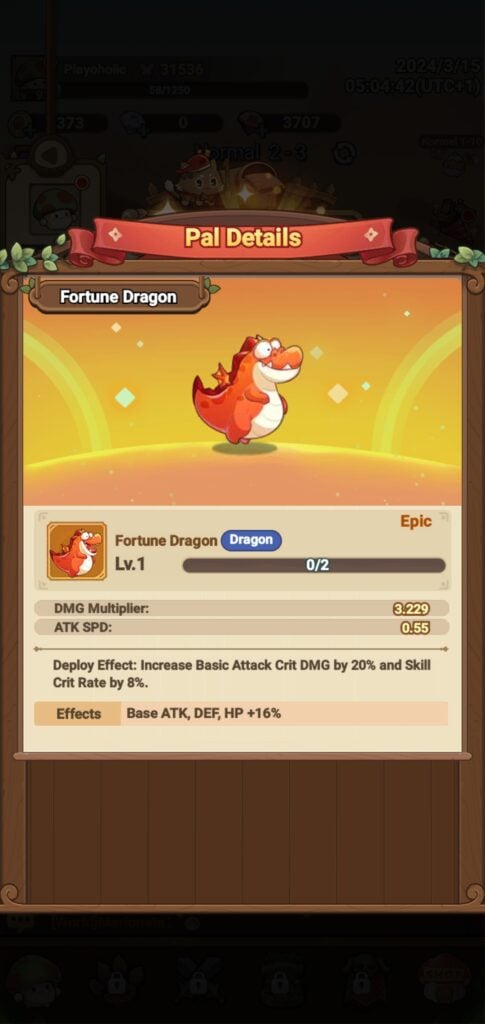
Photo: Joy Nice Games
Not to be confused with Palworld, you can have up to five pet-like Pals accompanying you on your journeys, battling alongside you by attacking foes and providing passive buffs.
Pals have their own rarities and levels, with the latter increased by combining duplicates of the same Pals from the Shop section (explored below).
Although not directly implied, Pals play an important role in helping you overcome many of the game’s tough Bosses, so leveling them up whenever possible is highly recommended.
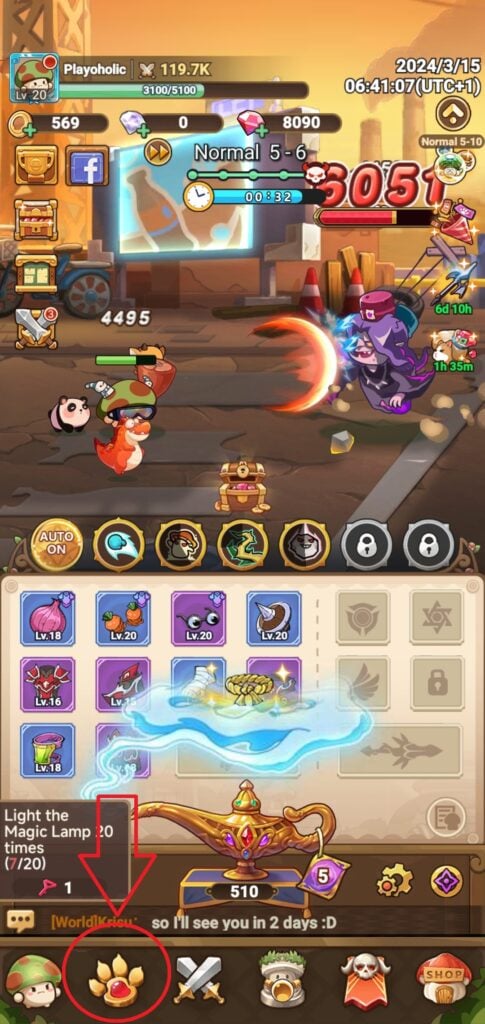
Photo: Joy Nice Games
To access the Pals menu, click its icon seen next to the Character Details segment detailed earlier.
Overworld (Stages)
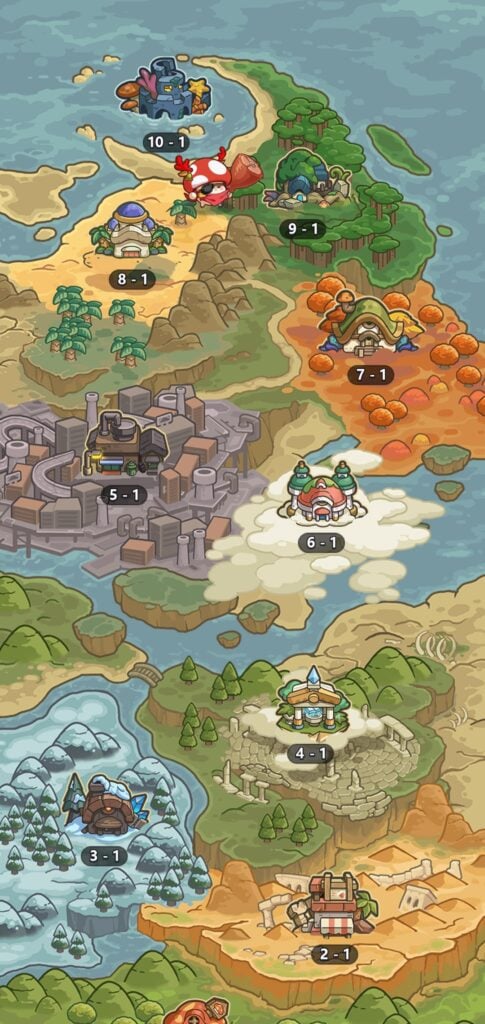
Photo: Joy Nice Games
After successfully conquering a Stage, you’ll automatically be transferred to another biome/ region housing new enemies and Bosses to defeat.
You’ll begin the game with Normal Stages first, and eventually face more difficult ones, such as Hard 1-2, after you’ve cleared all Stages found in your current run.
Presently, you can’t travel between different locations pre-emptively but can stay inside one for as long as you want by not challenging the area’s final Boss, allowing you to farm for more gear to strengthen or level up your hero.
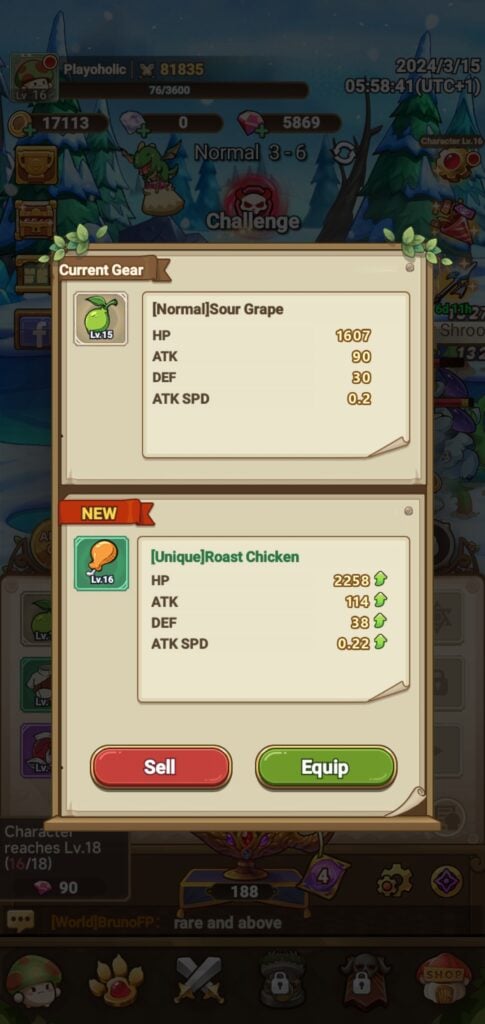
Photo: Joy Nice Games
However, each item summoned by the Magic Lamp will have its level capped according to the current Stage you’re in, meaning you’ll eventually be forced to progress to the next spot when pieces of your equipment are already at their maximum level locked for that specific region.
Game Modes
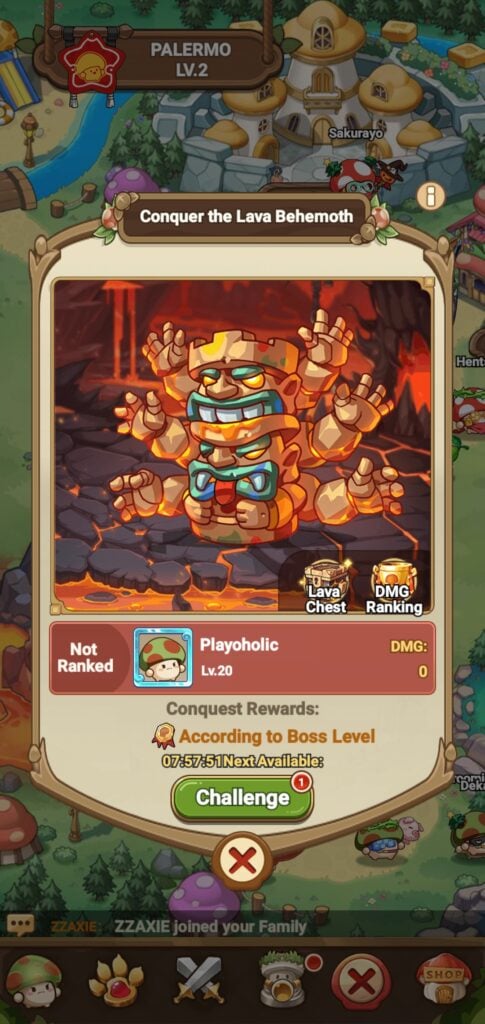
Photo: Joy Nice Games
Legend of Mushroom‘s normal idle gameplay isn’t the only way to enjoy the game. You’re provided with a few different game modes too, each offering ways to acquire different in-game materials or currencies.
These will gradually unlock as your character levels up and clears Stages. Let’s review the game modes you can explore right now.
Dungeon
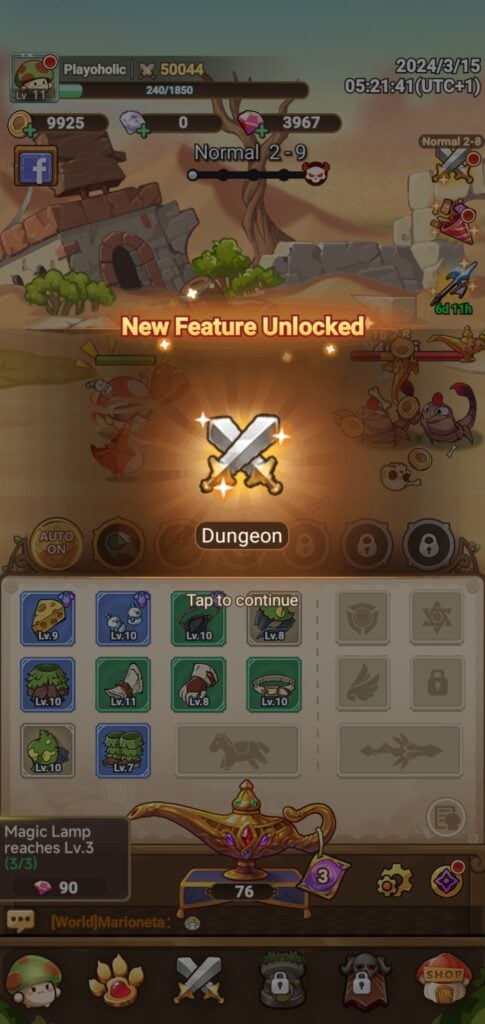
Photo: Joy Nice Games
The Dungeon opens up different one-shot challenges that reward you with specific materials or items, like more Magic Lamp uses or additional Skill Coupons.
Each can only be entered when you have their corresponding Keys that are only obtained as random loot from clearing out mobs from the idle screen.
Although the Keys are a bit difficult to obtain, beating Dungeon instances is the best way to accumulate specific resources quickly.
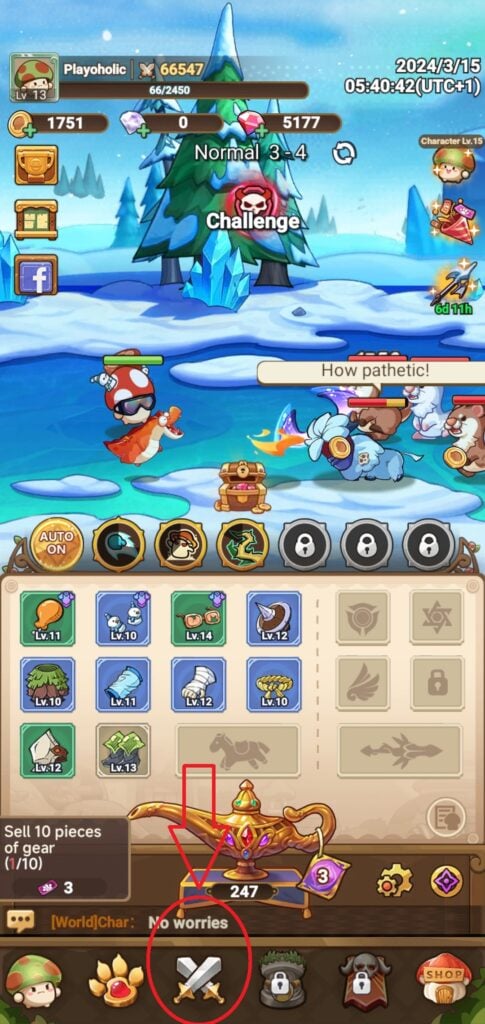
Photo: Joy Nice Games
You access the Dungeon by clicking its icon next to the Pal section on the screen’s bottom menu.
Areas/ Facilities
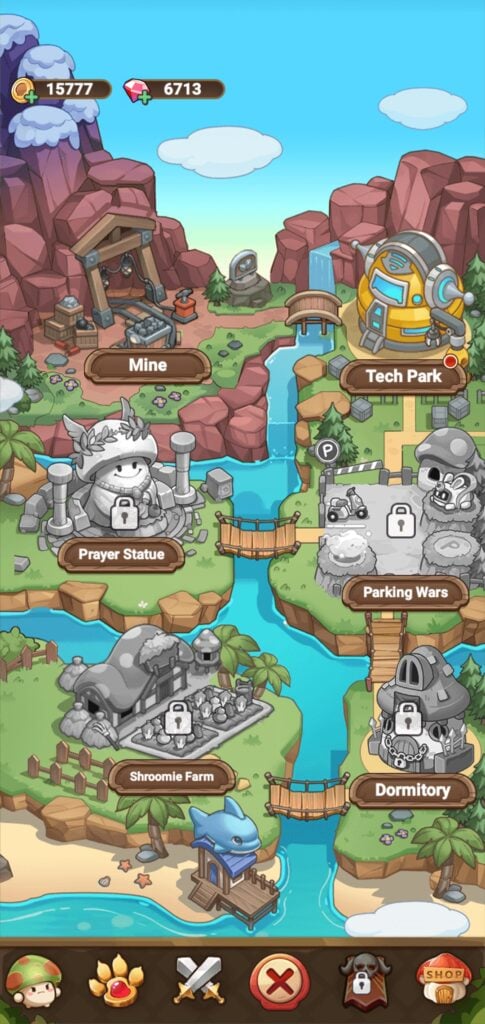
Photo: Joy Nice Games
This next section doesn’t seem to have a name, so we’ve called it the Areas/ Facilities part of the game. As you can see, you can visit different places to get even more in-game benefits.
For instance, the Mine is where you dig deeper into the earth to collect Ore. Afterward, Ore is then utilized to research passive stat bonuses for your character at Tech Park.
Each facility has its own systems to be learned, especially the Shroomie Farm. So, take the time to visit them once you start unlocking them as you enter the mid-game point of Legend of Mushroom.
Miscellaneous
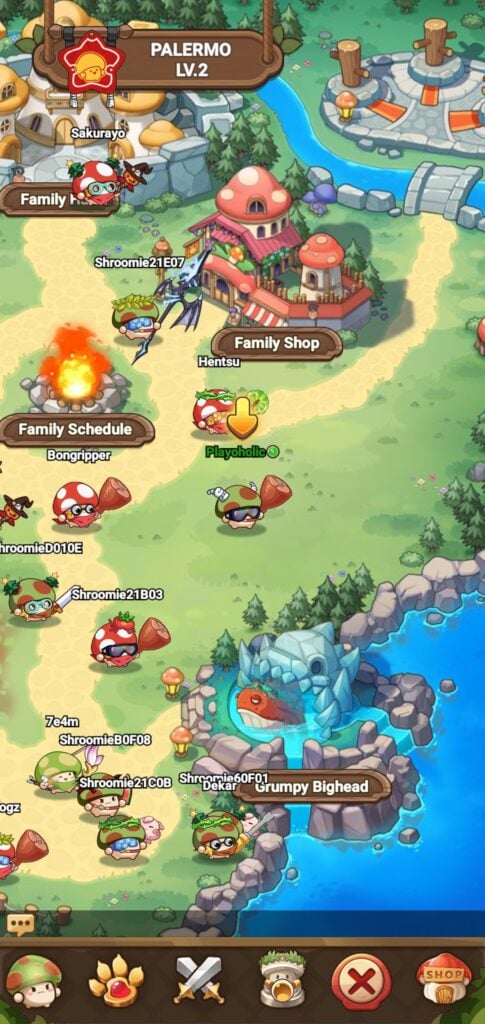
Photo: Joy Nice Games
The game’s major features have now been covered, but there are still a few extras to be checked; the Family and Shop sections.
Family
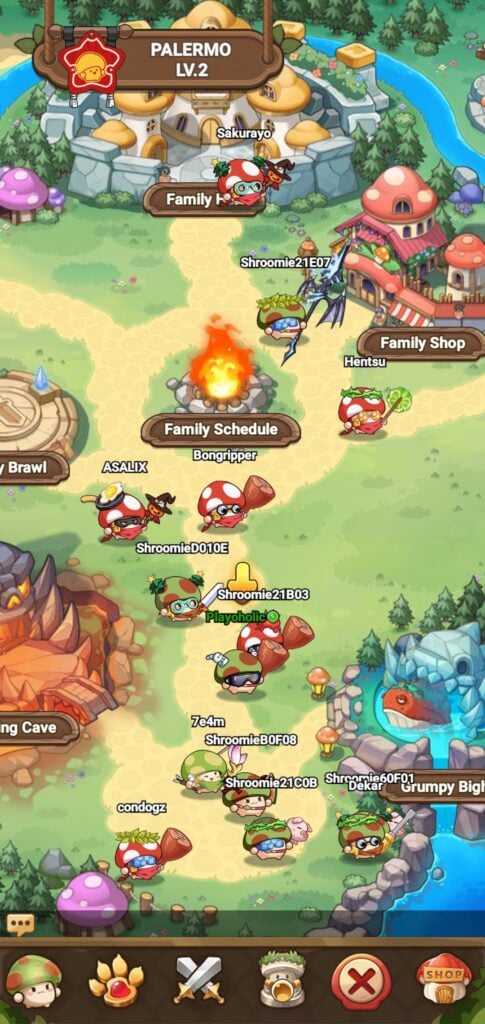
Photo: Joy Nice Games
Legend of Mushroom‘s Family space is the game’s equivalence to guilds. Here, you’ll meet other Family members, chatting away or helping each other through Speed Ups and joining Raids.
There’s also a Family Shop where you can buy in-game resources, and you pay for them by using Family Contributions (essentially, they’re Gold but only given as rewards for engaging in Family activities and donations).
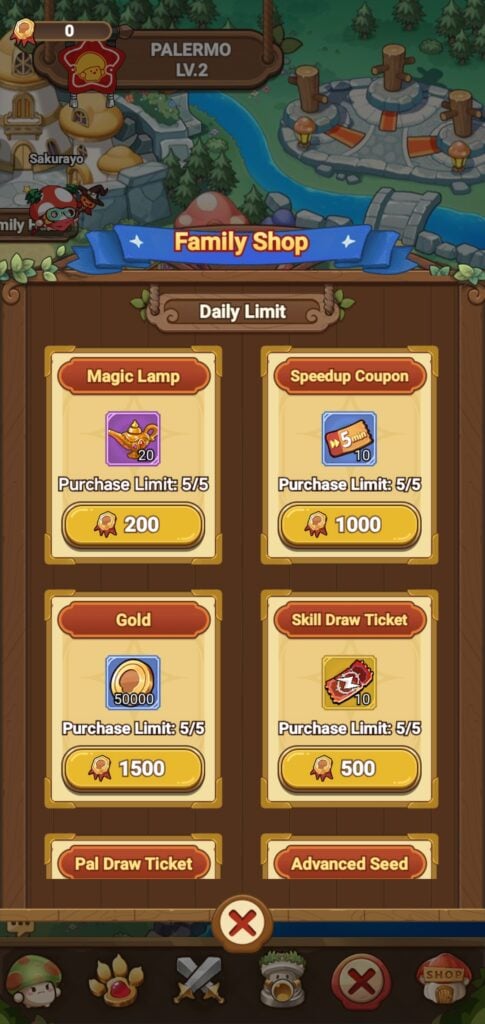
Photo: Joy Nice Games
Getting to the Family area is as simple as clicking the skeleton icon on the bottom tab/ menu.
Shop
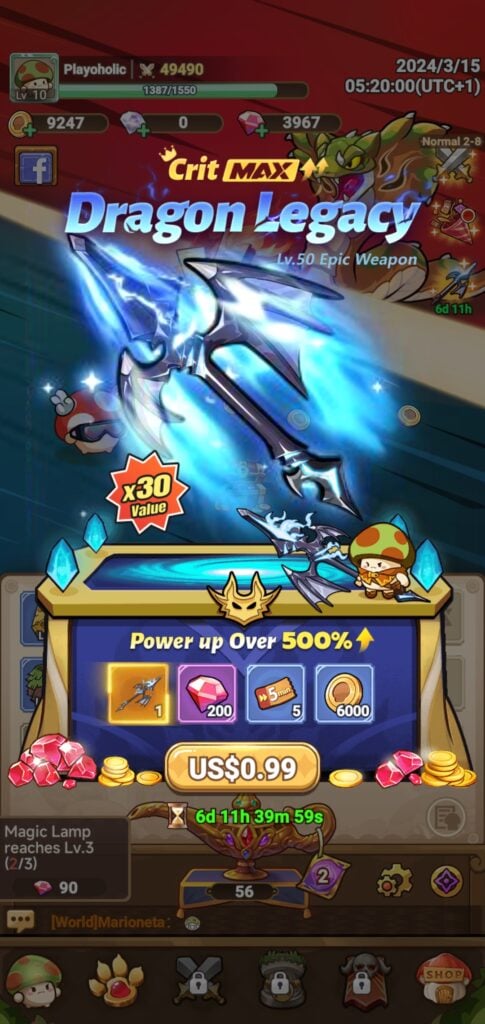
Photo: Joy Nice Games
Unlike other mobile games, you’ll be visiting Legend of Mushroom‘s Shop quite often, even as a free-to-play (F2P) player.
The reason is simple; drawing for new Skills and Pals using your acquired coupons (similar to summoning heroes in other gacha games).
There are five (5) different parts of the Shop, each being:
Drawing Machine (Skills, Pals)
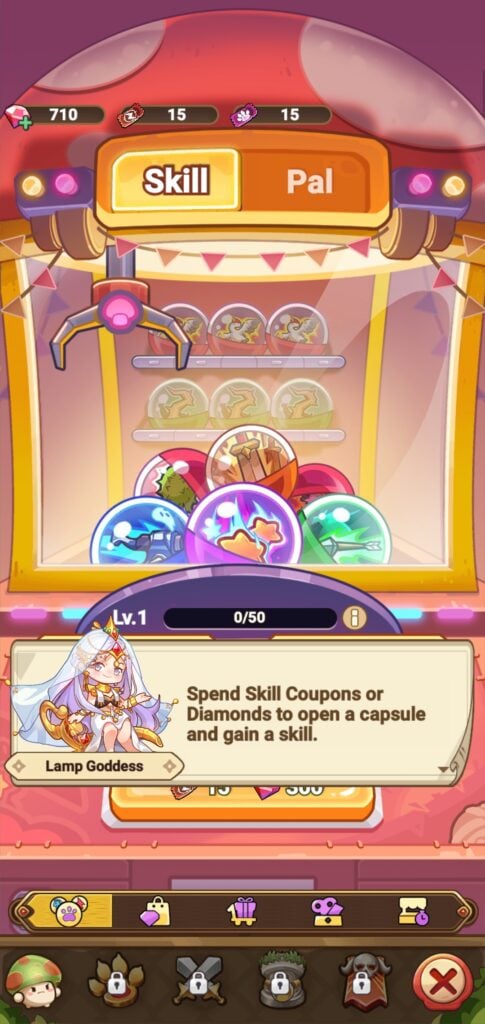
Photo: Joy Nice Games
Here’s where you draw for new Skills and Pals using your collected coupons.
As you continuously use it, its Level will gradually increase, leading to rarer Skills and Pals being added to its randomized pool.
Gem Shop
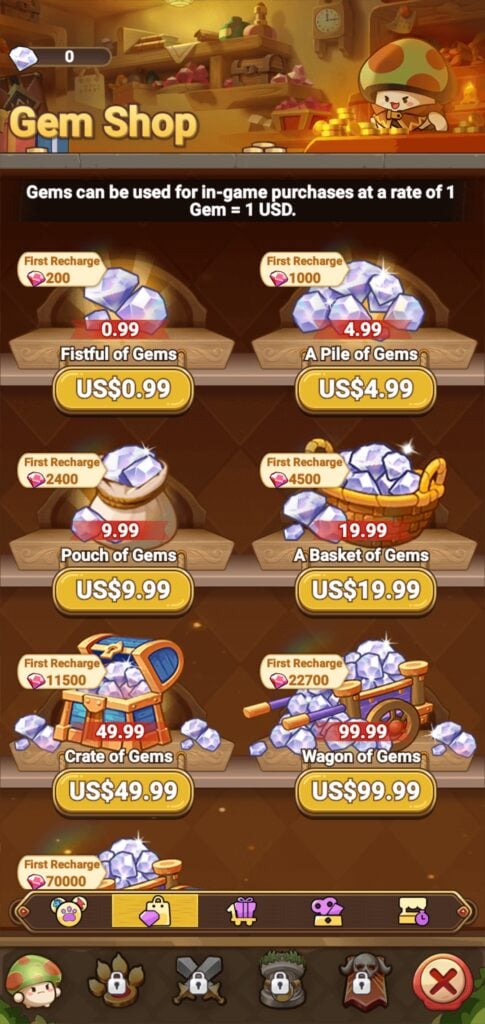
Photo: Joy Nice Games
As its name implies, the Gem Shop is where you purchase premium Gems using actual money. Plus, for first-time purchases, you’ll be given loads of Diamonds as extras.
Pack Shop
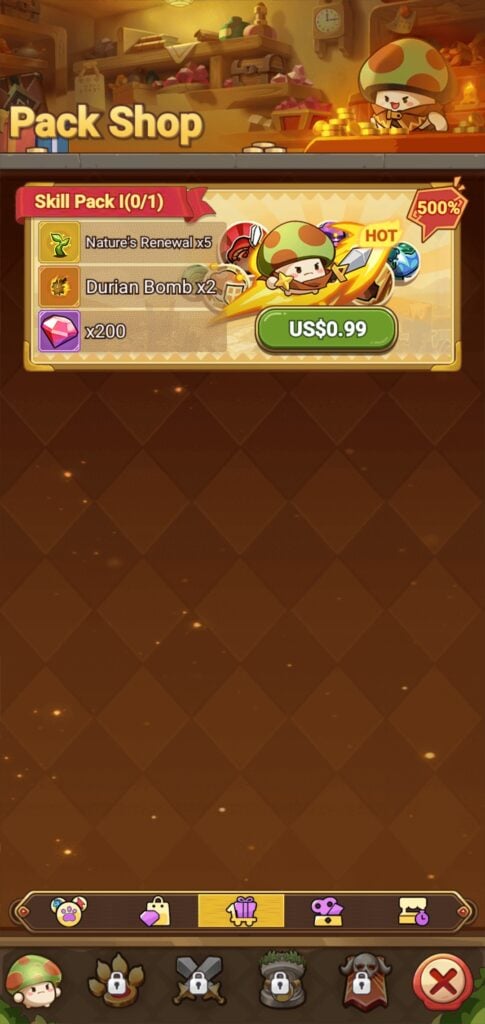
Photo: Joy Nice Games
The Pack Shop relates to different packages in the same vein as the Gem Shop, but their contents comprise various in-game items instead of Gems.
Supply Store
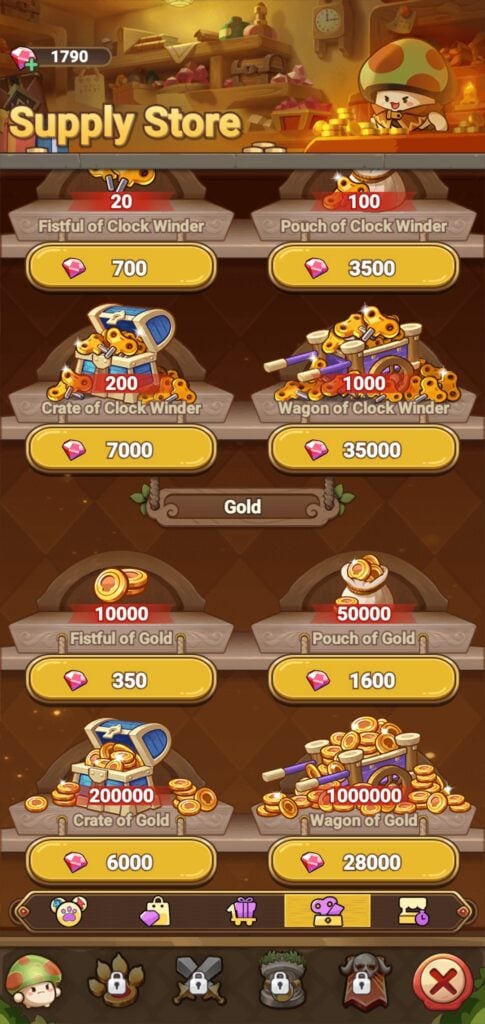
Photo: Joy Nice Games
If you’re looking to add more Diamonds, Gold, or Speed-Up Coupons (for faster research, etc.), then the Supply Store is where you find them.
You’ll be spending your accumulated Diamonds here, with the exception of actual cash to get more Diamonds instead.
Limited-Time Shop
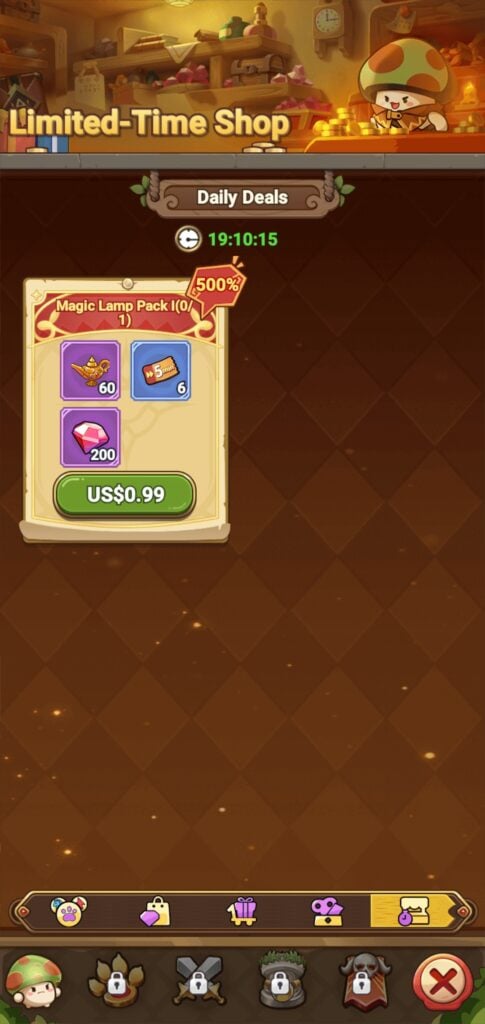
Photo: Joy Nice Games
Lastly, the Limited-Time Shop showcases great deals normally lasting for a few hours up to a whole week.
If you’re a spender, this is where you’ll likely spend your first few dollars in Legend of Mushroom.
Tips & Tricks
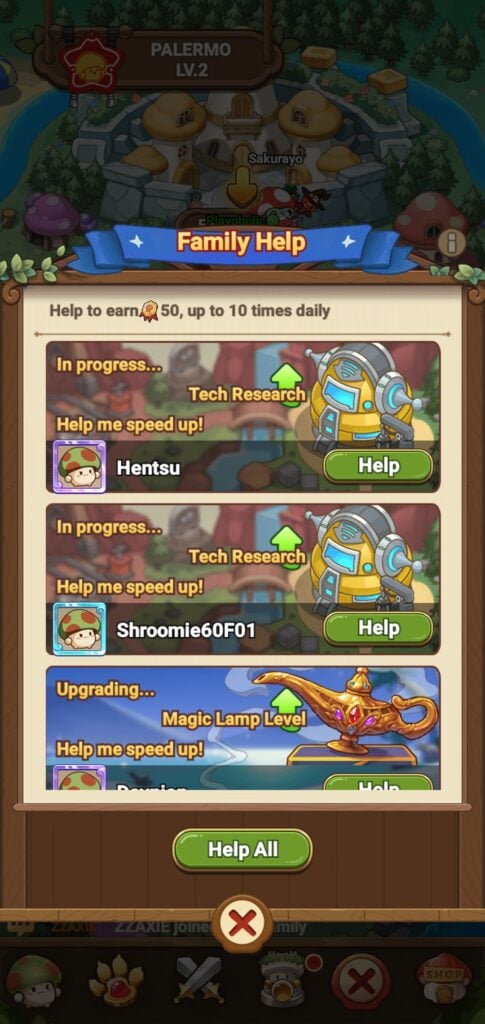
Photo: Joy Nice Games
Legend of Mushroom might look like your ordinary auto-battler, but its interrelated systems make it slightly more complex than its competitors.
So, here are some useful tips & tricks that you might find interesting:
#1 Prioritize the Attack stat
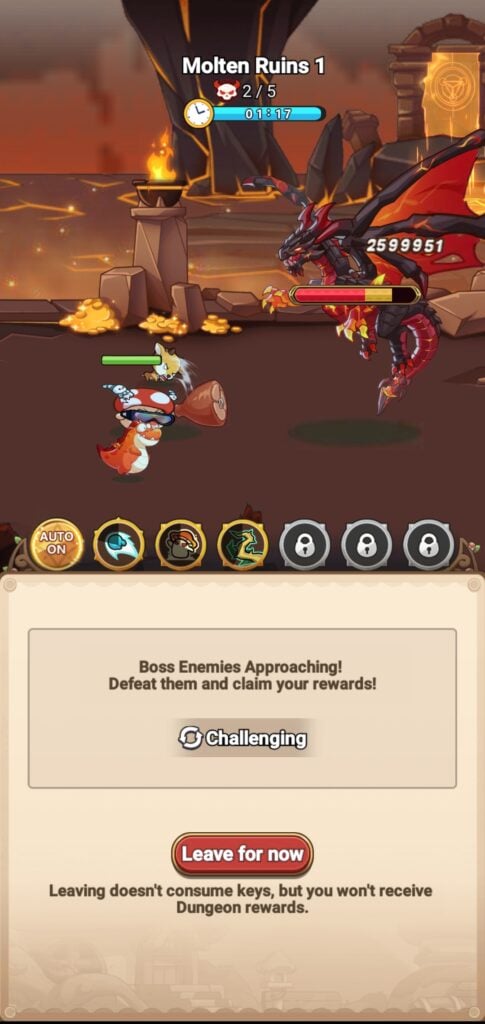
Photo: Joy Nice Games
Among your character’s stats, the Attack value is arguably the most important because defeating enemies quickly is more beneficial than prolonging fights.
This is particularly true against Bosses where a timer appears, forcing you to beat them within a certain period to win.
#2 Join a Family a.s.a.p.
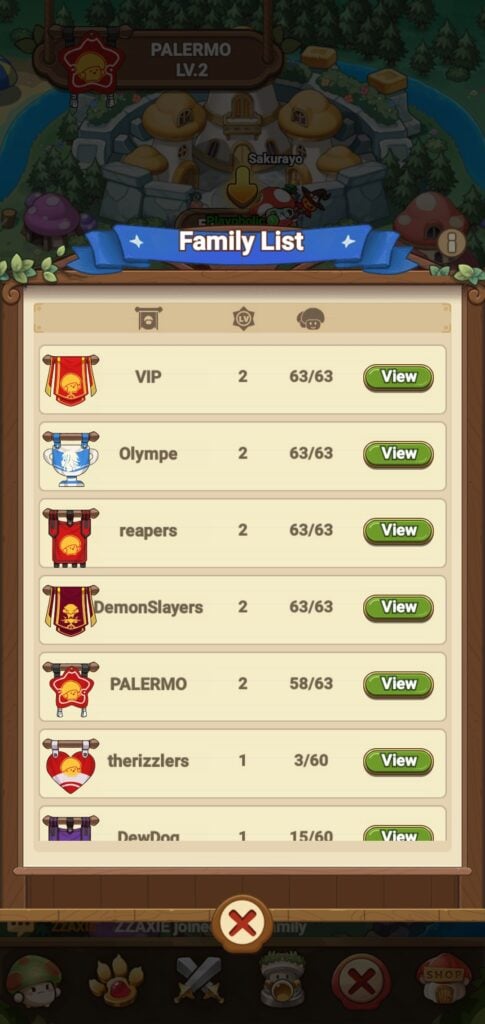
Photo: Joy Nice Games
While Legend of Mushroom is predominantly a single-player experience, joining a Family opens up more in-game features that aren’t available when playing solo.
Functions, such as the Family Shop, offer ways for you to progress much faster than normal means, and you’ll have the added advantage of other people helping speed up your in-game research times consistently!
#3 Complete daily tasks for steady rewards
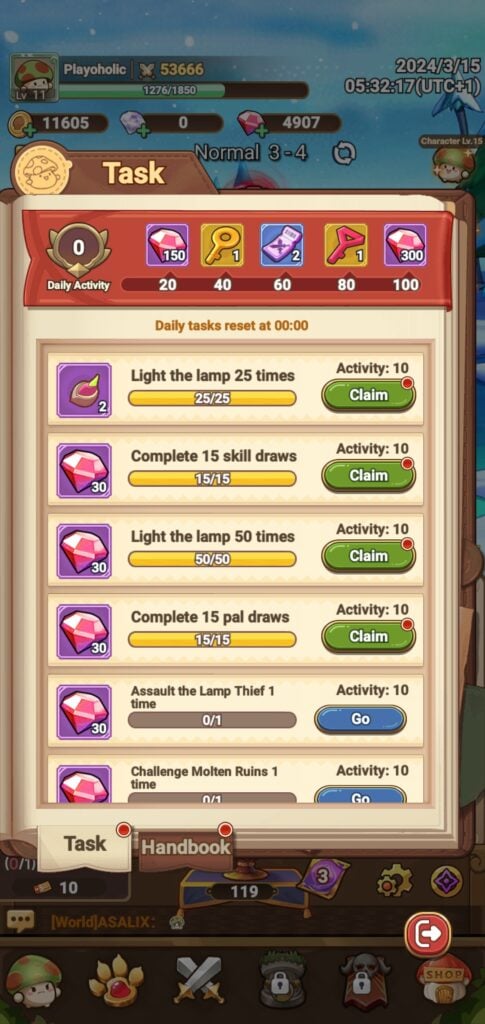
Photo: Joy Nice Games
In the beginning, you might find yourself lost on what to do, which resources to get, and how to acquire them.
This is where the daily tasks become a godsend; they align you with your character’s progression, letting you learn the game’s mechanics while gifting you precious rewards (most notably, Diamonds) upon their completion.
#4 Change your Skills & Pals when necessary
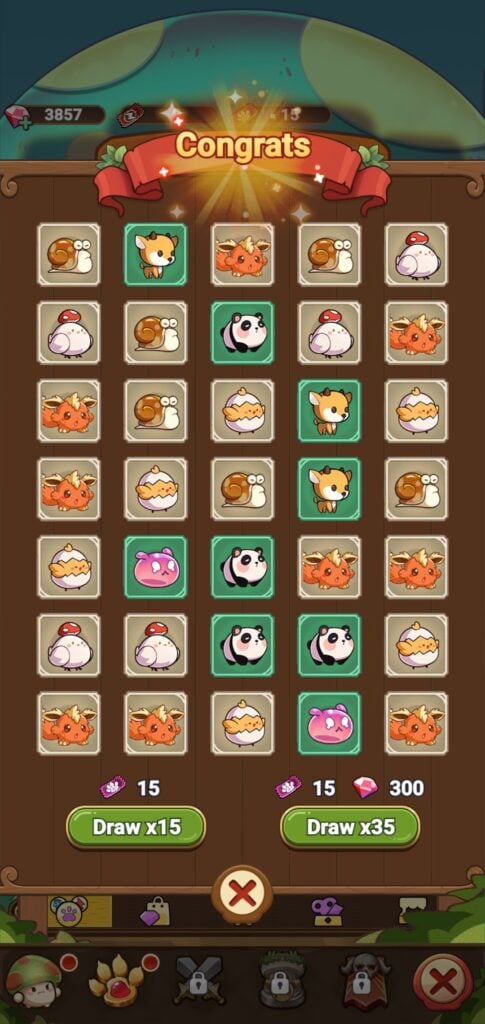
Photo: Joy Nice Games
Legend of Mushroom has a respectable catalog of Skills and Pals to choose from, and they boast unique effects and passive bonuses to your character during battle.
While you might have your favorites, enemies become tougher as you move towards the end-game, and your Skills and Pals might not have been enhanced enough at that point, but others have (due to the RNG odds from the Drawing Machine).
So, switching things around could help you beat certain Stages in-game.
#5 Prepare different presets
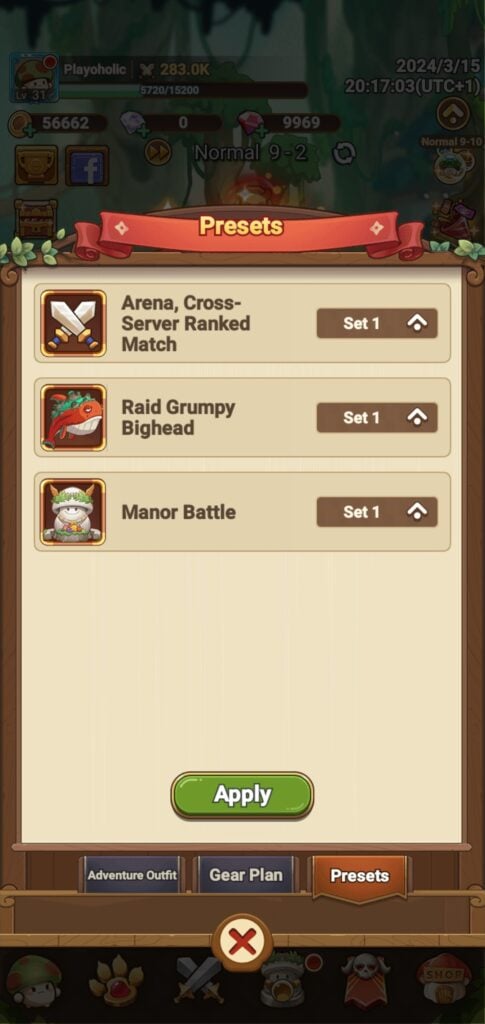
Photo: Joy Nice Games
Still on the topic of Skills and Pals, you can also prepare presets of their combinations before use, letting you change load-outs on the fly if needed.
This saves you a lot of micro-management and time.
#6 Master the Handbook
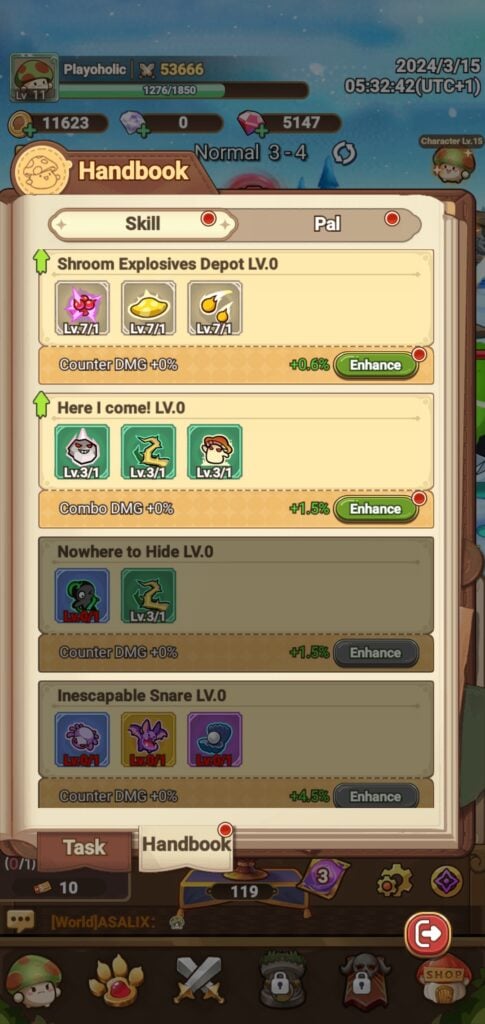
Photo: Joy Nice Games
The Handbook is a more nuanced in-game component hidden from many player’s view. Basically, it explains the extra effects you can achieve by pairing specific Skills or Pals together.
This ties directly to your presets too, so they work hand-in-hand. You access it by opening the Task tab first and then selecting the Handbook option next to it.
#7 Share and link to a social media account
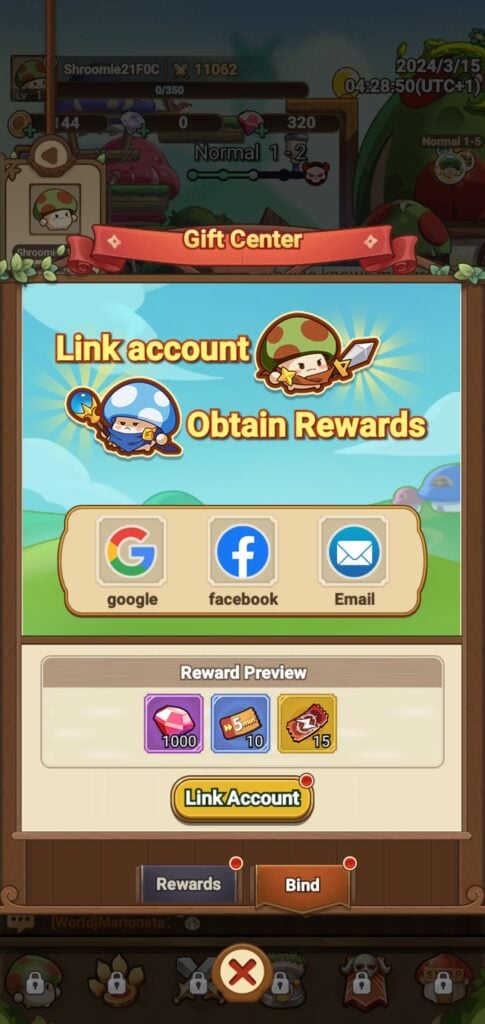
Photo: Joy Nice Games
As a new player, linking your game profile to an external account (e.g. Google, Facebook, etc.) rewards you with great one-time freebies!
Not only that, sharing the game with your friends also gives additional rewards as well.
#8 Abuse the Magic Lamp’s Auto-Use function
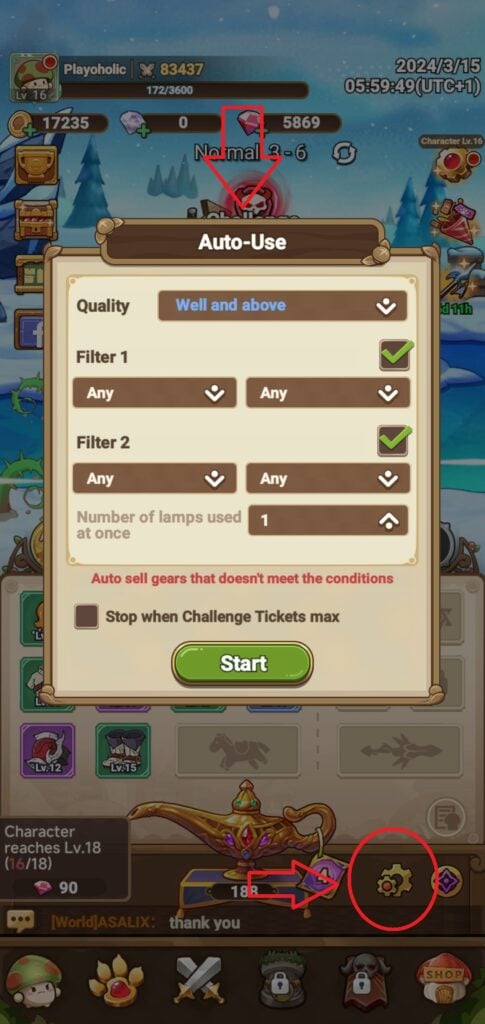
Photo: Joy Nice Games
The Magic Lamp’s constant summons for new gear is crucial to your hero’s in-game progression.
As such, you should always turn its Auto-Use on to let it work while you rest your fingers, only giving feedback when deciding the next gear to equip or sell.
#9 Farm Offline Rewards
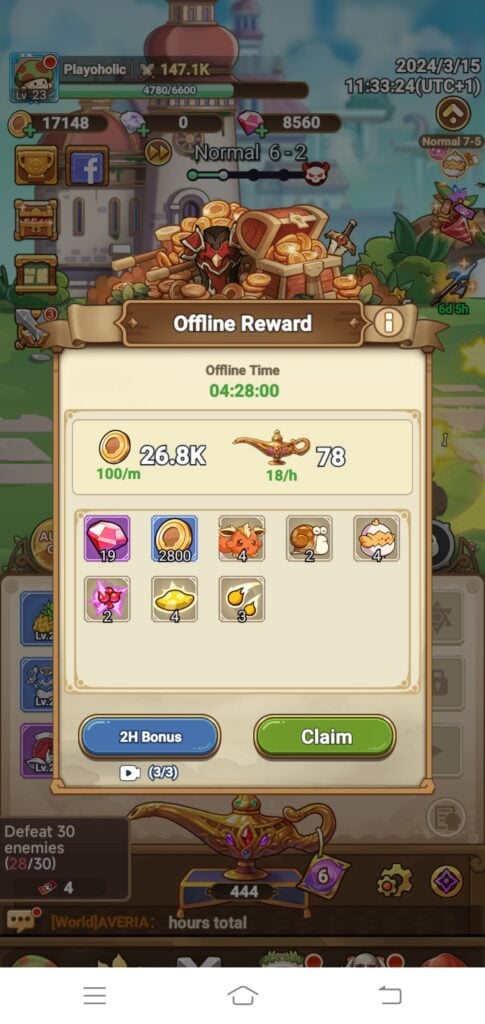
Photo: Joy Nice Games
This should be a no-brainer, but you should always collect Legend of Mushroom‘s Offline Rewards every few hours.
Not only does it share numerous materials and currencies with you for free, but you can also min-max your daily grind if you time your reward farming correctly.
#10 Additional features unlocked after minimum days played
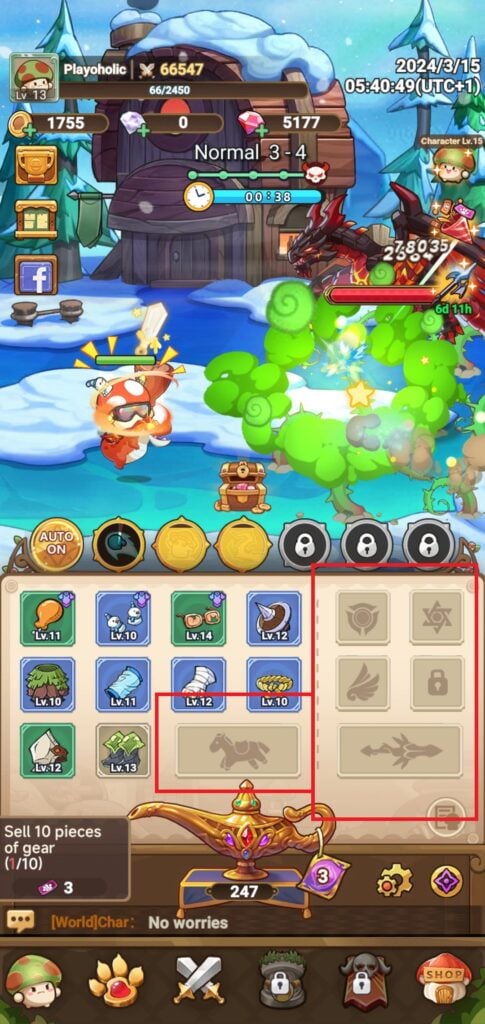
Photo: Joy Nice Games
Legend of Mushroom is one of those games where some aspects are locked behind a minimum number of days you’ve played it.
So, if you wish for a mount for your character to ride on, you need to play the game for four (4) days first; and that’s just one example!
Conclusion
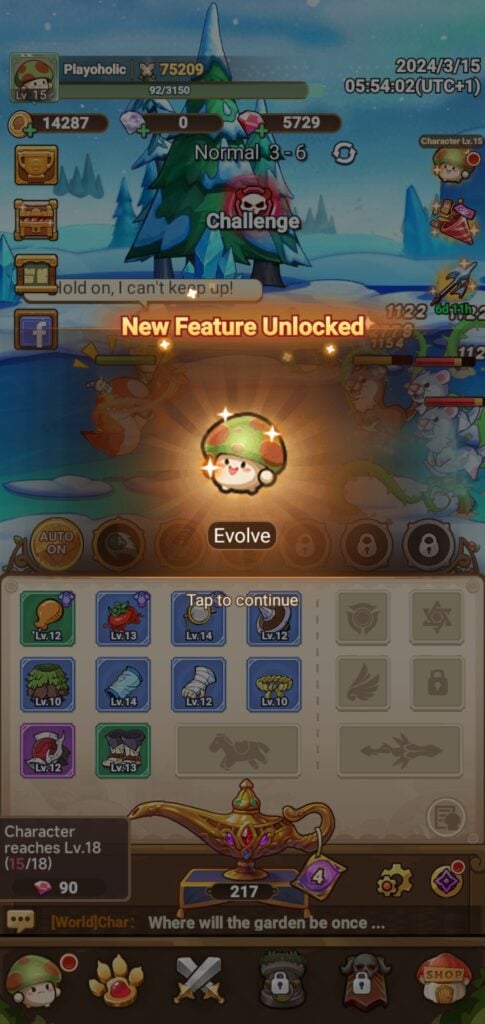
Photo: Joy Nice Games
Joy Nice Games might not have a comprehensive list of games developed, but Legend of Mushroom proves that quality is still much more important than quantity, especially for us, gamers.
If you’re looking for other idle mobile games to check out, consider reading our impressive guides for Auto Battles Online: Idle PvP and Stone Adventure – Idle RPG too before you go!






